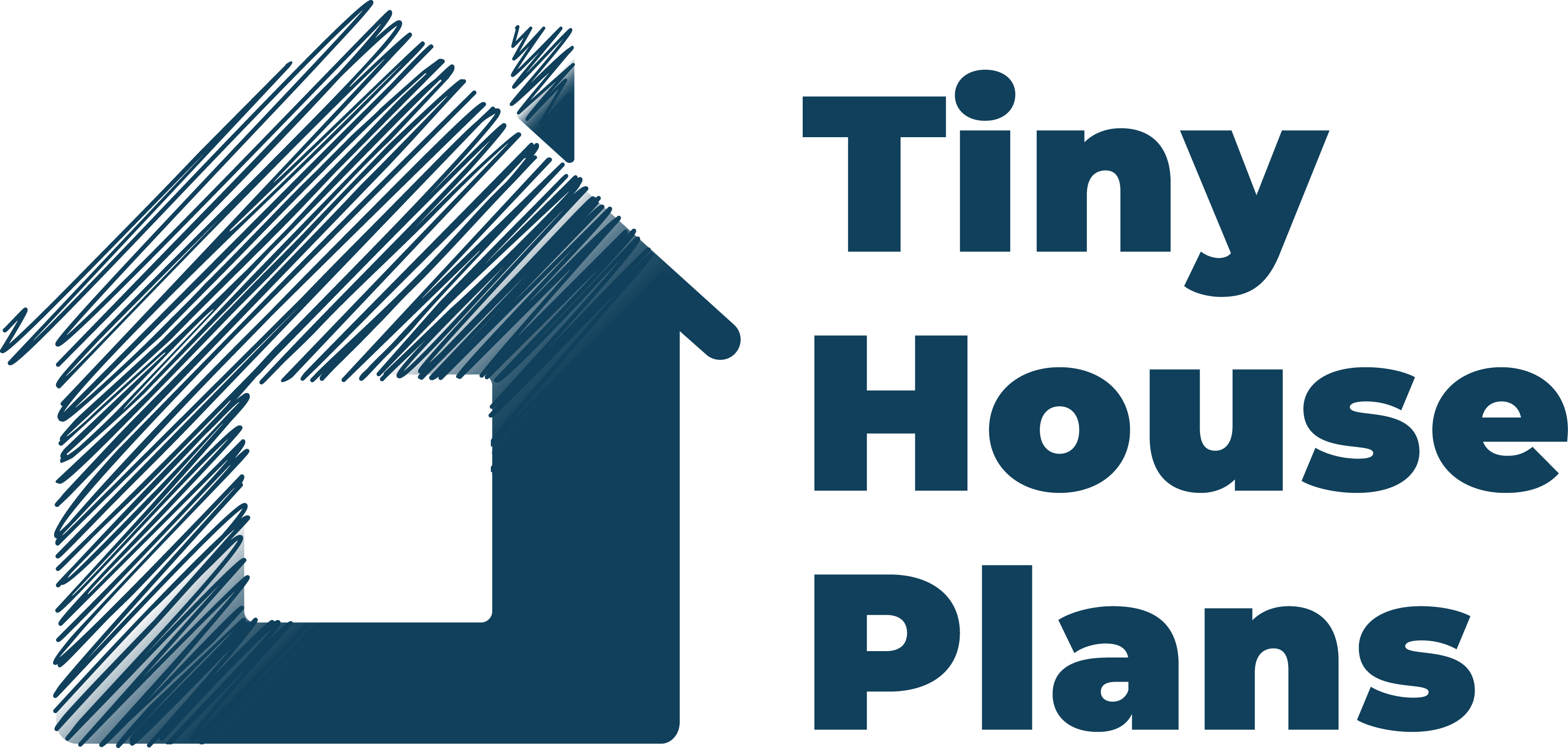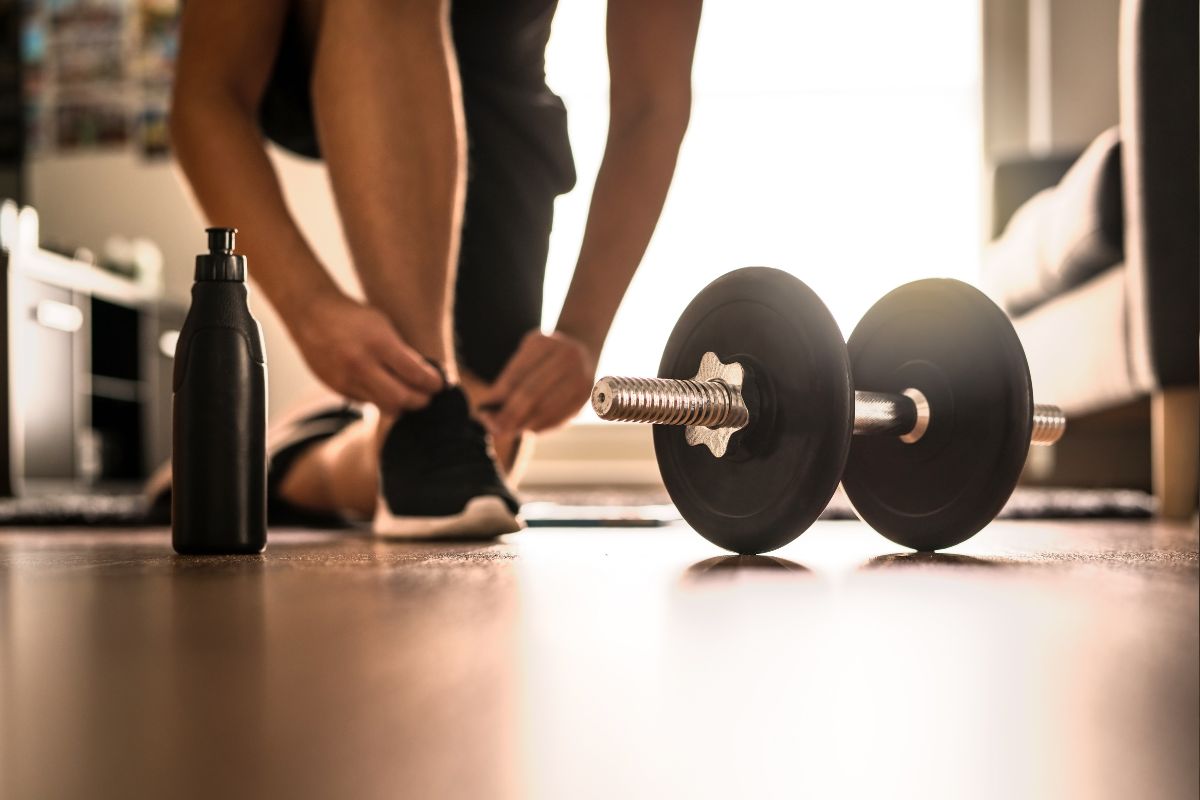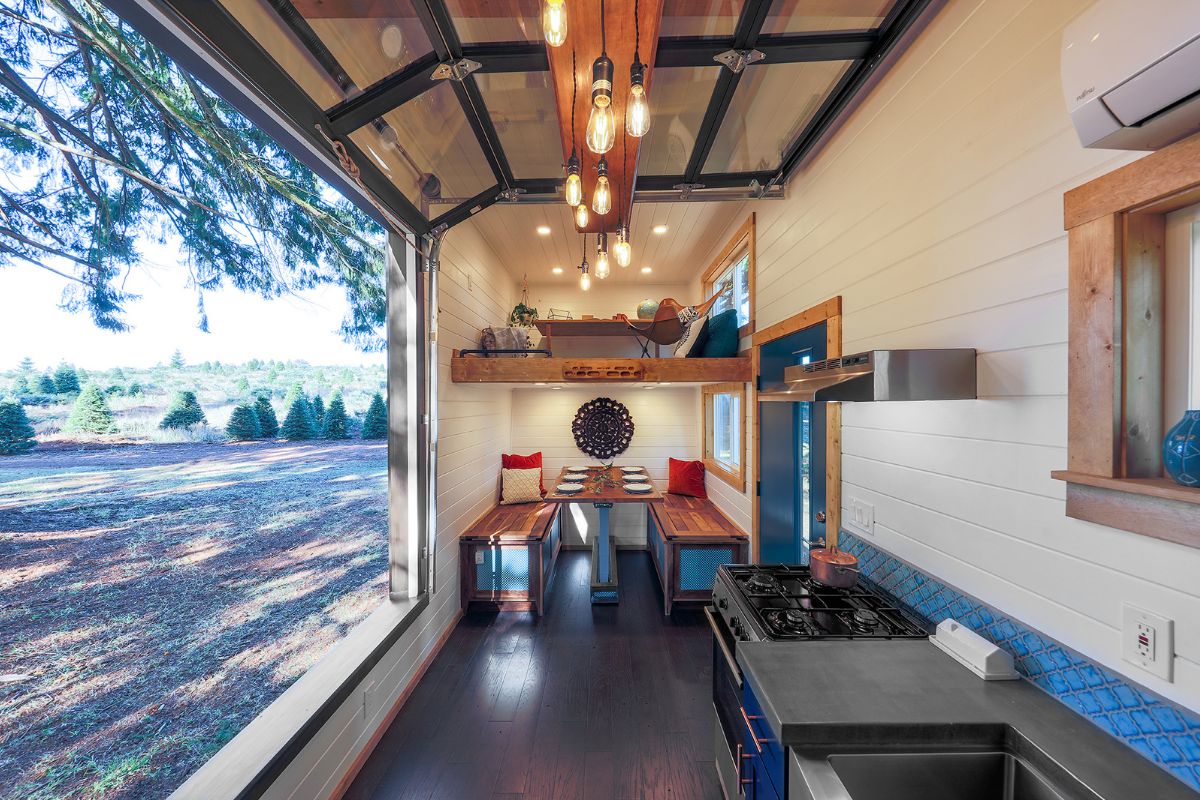Aesthetics matter too, right? Incorporating the right decor, lighting, and ventilation can improve the ambiance and motivation. You might be wondering, how do you maintain the efficiency of this compact gym over time? Well, that's worth exploring next.
Understanding Your Fitness Needs
To design a functional tiny home gym, you need to first evaluate your fitness goals and understand what equipment and space will best cater to your workout needs. It's not about cramming as much equipment into a space as possible, but selecting the right tools that align with your fitness aspirations.
Are you looking to build strength, improve flexibility, enhance cardio, or a combination? Your answer will determine the types of gear you need.
Let's say you're targeting strength training. You'll want a set of dumbbells or kettlebells, a resistance band, and maybe a bench. If cardio is your focus, consider a compact treadmill or a stationary bike. Yoga enthusiasts might need just a mat and some blocks.
Take time to research each piece of equipment, understanding its versatility, footprint, and value against your goals.
Identifying Suitable Spaces
Once you've pinpointed your fitness needs and the equipment that aligns with them, it's time to scout out your home for the perfect workout zone. Remember, you're not just looking for any old space - you need a spot that's conducive to exercise and won't interfere with your daily living.
One option is to convert a spare room or unused corner into your fitness haven. Even a small, unoccupied nook can work wonders if you organize it efficiently. You'll want plenty of natural light, if possible, as it can enhance your mood and energy levels during workouts.
Your basement may also be a good fit, offering privacy and plenty of room for a variety of workouts. If you're lucky enough to have a garage, it could be another great option, providing ample space and easy access to fresh air.
Alternatively, if indoor space is at a premium, consider your outdoor options. A patio, deck, or even a small yard could serve as your workout space, weather permitting.
Selecting Space-Saving Equipment
With your workout space nailed down, it's time to think about filling it with compact, versatile equipment that won't consume too much room. Choosing the right gear is essential because you need to maximize every inch of your tiny gym.
Firstly, consider adjustable dumbbells. They're a perfect fit for your small gym as they provide a full-body workout without taking up much space. You can adjust the weight as per your needs, making them a versatile option.
Secondly, resistance bands are a must-have. They're light, easy to store, and offer a great variety of exercises. They're perfect for strength training, flexibility, and even rehab exercises.
A folding exercise bike or a compact elliptical trainer can cater to your cardio needs. These machines are designed to be space-efficient, and many models can be folded for storage.
Think about a wall-mounted pull-up bar or a door-frame model. These are invaluable for upper body workouts and they take virtually no floor space.
Efficient Layout Planning
Now that you've got your compact equipment sorted, it's essential to plan an efficient layout for your tiny home gym. Here's the good news: a clever layout can make your space feel larger and more functional than it actually is.
Start by sketching out your space, marking any doors, windows, or other obstructions. This will give you a clear picture of what you're working with. Then, think about the flow of your workouts. You'll want a clear path for movement-based exercises, like lunges or yoga flows, and ample room around weight training equipment for safety.
Consider the ergonomics of your space. Place the equipment that you use most often in the most accessible spots. You don't want to be stepping over your dumbbells to get to your stationary bike, for example.
Lastly, don't forget about storage. Even in a tiny gym, you'll need places to stash towels, water bottles, and other essentials. Consider using vertical space and corners for smart, space-saving storage solutions.
With a little thought and planning, you can create a tiny home gym that's big on function.
.jpg)
Incorporating Multipurpose Furniture
Incorporating multipurpose furniture into your tiny home gym can be a game-changer, maximizing your space while ensuring it remains functional and stylish. Not only do these pieces save space, but they also offer a variety of workouts, making them perfect for a compact gym.
Consider a weight bench that doubles as a storage unit, keeping your dumbbells and resistance bands out of sight when not in use. Or how about a wall-mounted pull-up bar that can be folded when you're not sweating it out? You'd be surprised at how much room you'll save and how sleek your gym will look.
Additionally, you can opt for a convertible exercise bike that transforms into a desk for those work-from-home days. Similarly, adjustable dumbbells allow for a range of weights in one compact design, eliminating the need for multiple sets.
Lastly, don't overlook the importance of a good quality yoga mat. It's not just for yoga; it can be used for a variety of floor exercises, and when you're done, it rolls up neatly and can be stored easily.
Maximizing Vertical Space
Don't forget to look up when designing your tiny home gym, as maximizing vertical space can greatly increase your workout area and storage capacity. You're not just confined to the floor footprint; the walls and ceiling hold immense potential too. With a little creativity, you can transform them into an essential part of your fitness regime.
Consider installing a vertical storage system on one of your walls. This could house your yoga mats, resistance bands, and weights, keeping them off the floor and within easy reach. Think about adding a wall-mounted pull-up bar too. It's a great strength-building tool that takes up minimal space.
A tall, slim shelving unit can also be a smart addition, providing storage for smaller items like dumbbells and kettlebells. Alternatively, you could use a pegboard wall, which offers the flexibility to change layout as your fitness needs evolve.
Lastly, a ceiling-mounted TRX system provides a full-body workout and can be tucked away when not in use. It's a perfect example of how to make the most of every inch of your tiny home gym. So, look up and leverage that vertical space. Your gym, and your workouts, will thank you for it.
Lighting and Ventilation Considerations
While making the most of your vertical space is essential, you also need to give careful thought to the lighting and ventilation in your tiny home gym to guarantee a comfortable and invigorating workout environment.
Lighting, for starters, is vital. You don't need a gym lit like a department store, but you do need to see clearly. Opt for adjustable lighting, perhaps with dimmer switches, to adapt to different workout times and moods. Natural light is also a bonus, so consider installing skylights or larger windows if you can.
Next, ventilation is a must-have. You're going to sweat, and without proper ventilation, your gym could quickly become a sauna. Not to mention, poor air circulation can lead to unpleasant odors. A window that opens can work wonders, but if that's not possible, look into installing an exhaust fan or a portable air purifier.
Stylish Yet Functional Decor Ideas
Enhance your tiny home gym with a blend of stylish yet functional decor that not only uplifts the aesthetics but also invigorates your workout motivation. A dynamic color scheme can transform the look of your gym. Opt for energetic hues like blues, greens, or oranges, which are known to stimulate focus and energy. You can incorporate these colors in the form of wall paints, rugs, or gym accessories.
Don't forget the walls. Motivational posters or decals are a great way to keep your spirits high during those tough workouts. For a cleaner look, you could frame your favorite motivational quotes and arrange them artistically on the wall.
Mirrors aren't just for vanity; they can make your small gym space appear larger and let you check your form during exercises. Install a full-length mirror on a wall to serve this dual purpose.
Lastly, consider adding some greenery. Small indoor plants not only purify the air but also add an element of tranquility to your workout space. Choose low-maintenance ones like spider plants or snake plants.
Maintaining Your Tiny Home Gym
Maintaining your tiny home gym clean and organized not only optimizes your space but also guarantees your equipment lasts longer and stays in good working condition. It's not as intimidating as it sounds, with a bit of routine and discipline, you'll have it down in no time.
Start by decluttering weekly. Remove any items that don't belong in the gym space, like coffee mugs, books, or clothing. It's easy for clutter to accumulate in small spaces, and before you know it, you're tripping over stuff.
Next, dust and wipe down your equipment regularly. Sweat and dust can cause wear and tear over time. Opt for a gentle, non-abrasive cleaning solution to avoid damaging your gear. Don't forget to check your equipment for any signs of wear or damage while you're cleaning.
Conclusion
Designing your tiny home gym might seem challenging, but it's absolutely doable. Don't forget to tailor it to your fitness needs, make clever use of multipurpose furniture and vertical space, and choose compact, versatile equipment.
Keep it stylish, well-lit, and ventilated to enhance your workout mood. And remember, maintaining its cleanliness is key to an effective workout space.
Adopt these tips, and you'll see how a small space can lead to big fitness gains. Enjoy every sweat-dripping moment!






Share: